🎉
We've raised a $25M Series A. Read more
15 Essential Strategies for B2B SaaS Lead Generation

B2B lead-gen strategies aren’t exactly in short supply. By all outside appearances, SaaS marketers have never had it so good. From search to social, they have dozens, if not hundreds, of options.
So what’s the issue?
Simply this: quantity doesn’t equal quality. It’s not that most strategies are ineffective. But the vast majority won’t be right for your business. Even worse, wading through mountains of information to find best-fit strategies is time-consuming and more frustrating than a bad toothache.
This guide takes a different approach. It provides a solid overview of what’s working in B2B SaaS lead-gen in 2025. However, the focus is on pinpointing those two or three approaches with a good chance of working for your business.
With a tailored mix, you can target the right prospects, differentiate your brand, and reach those all-important decision-makers.
Sound good? Let’s crack on and generate some B2B leads.
What Is SaaS B2B Lead Generation?
B2B SaaS lead generation is the process of engaging and nurturing potential customers for B2B SaaS products.
It’s one of the most important aspects of running a SaaS company, with a direct impact on baseline metrics like revenue and profitability. Without a smoothly running B2B lead-gen engine at the start of the buyer journey, the business will eventually fail.
Effective lead gen is the top priority for 91% of B2B marketers. In addition, marketers list improving lead conversion rates and generating more leads as their top challenges.
Most lead gen for B2B SaaS is digital and falls into three categories: paid, unpaid, and organic. Paid B2B lead generation relies on ad platforms like Google Ads, LinkedIn Ads, X Ads, and so on. Unpaid strategies include cold outreach, referrals, and re-engagement campaigns. Organic traffic lead gen uses high-value content to engage potential customers through social, search, and email.
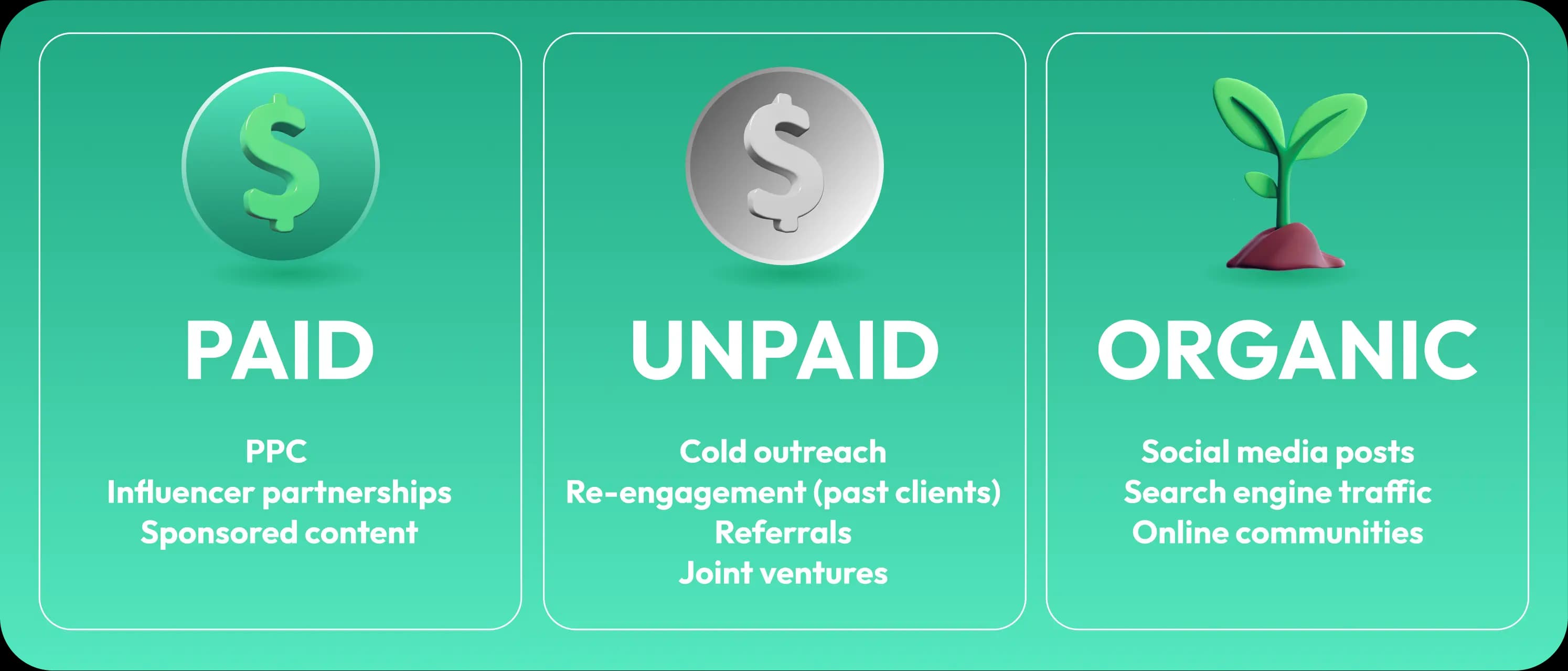
SaaS lead generation has three important characteristics that separate it from its B2C counterpart:
Multiple stakeholders are usually involved in the buying process.
The market tends to be narrower because the targets are businesses, not consumers.
The marketing and sales cycle is longer than for B2C, sometimes spanning months.
B2B SaaS is a highly competitive space. Hundreds of startups are launched every year, with multiple providers vying for the same paying customers.
This competition highlights the importance of brand differentiation, constant innovation, and exceptional customer service. With an iron-clad value proposition in place, achieving a high B2B lead conversion rate becomes significantly easier.
15 Strategies for B2B SaaS Lead Generation
Let’s look at the top strategies in 2025 for boosting your marketing efforts and connecting with high-value, eager-to-buy leads.
1. Create Valuable Content
Most content online is—how can we say this nicely—useless fluff. Yet the SaaS providers winning at the content game, producing material that’s actually useful, are generating consistent and high-quality leads practically on autopilot.
For example, companies with regularly updated blogs generate 67% more leads per month on average compared to those without blogs.
Here are some steps for guaranteeing the quality of your content:
Focus on thought leadership with input from subject-matter experts where appropriate.
Avoid business jargon and obfuscation, with an emphasis on clarity and practical guidance.
Use hard data, including case studies and internal data, as much as possible.
Don’t be afraid to sell, showing how your software can solve readers’ problems.
Keep your content up-to-date and current, refreshing “evergreen” regularly.
Your content doesn’t need to match the quality of Shakespeare. However, due to the fact that most companies aren’t producing high-quality content, investing in this area is one of the easiest ways to stand out and position your brand as a thought leader.
2. Implement SEO Best Practices
Producing high-quality content is one half of the battle with B2B lead gen. You’ve also got to ensure it’s prepped and primed for your distribution channels, of which search engines are one of the most powerful. One survey found that SEO generates 34% of leads on average for B2B marketers.
Keeping up-to-date with SEO requires regularly checking best practices, especially through official documentation published on Google Search Central. That said, SEO tends not to change as quickly as most B2B marketers think.
Here are some quick tips for ensuring your content dominates those all-important top-five positions:
Find and include long-tail keywords in content using a tool like Ahrefs or Moz.
Add strategic calls to action (CTAs) to the top, middle, and bottom of your content.
Research and improve on articles that already rank for your SaaS competitors.
Regularly refresh and optimize existing “evergreen” content.
Continually analyze SEO performance and make adjustments to your keyword strategy as appropriate, finding the sweet spot between search volume and KW competition.
Always remember that content quality in line with Google’s EEAT (Expertise, Authoritativeness, Trustworthiness) guidelines is the biggest single contributor to search success, with SEO optimization as the icing on the cake.
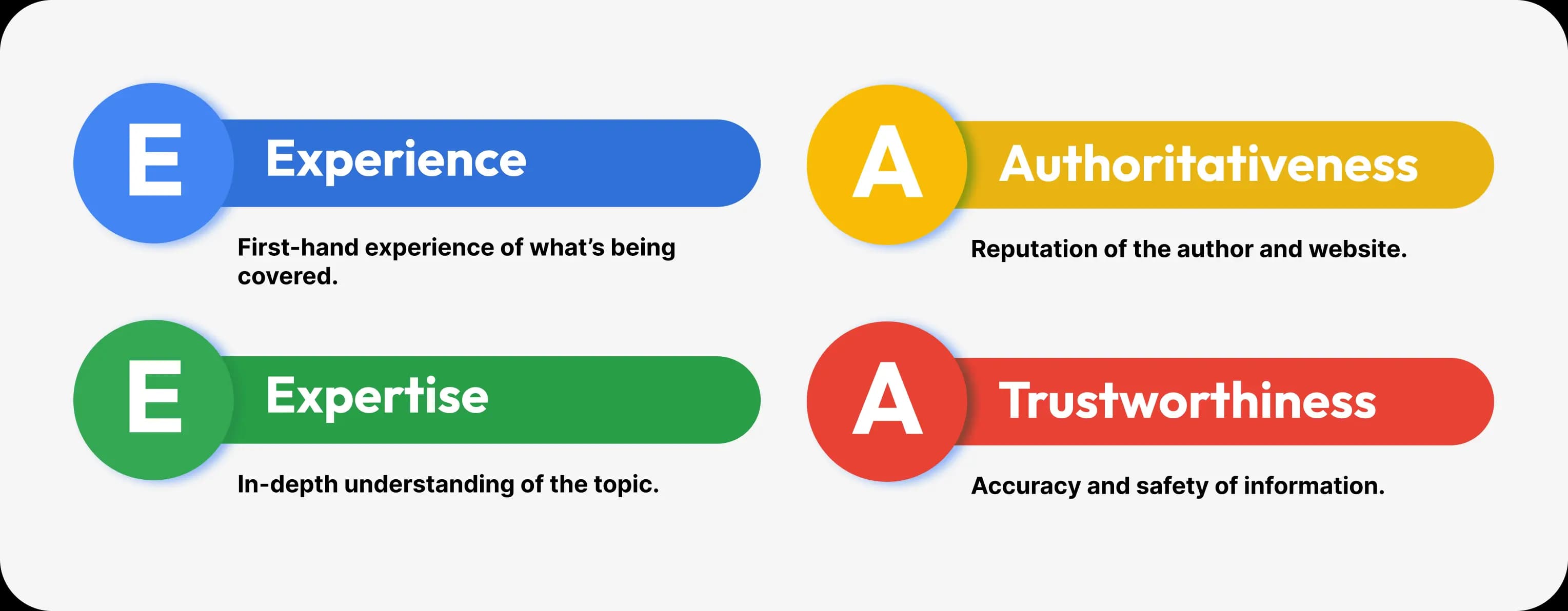
3. Run Cold Outreach Campaigns
For many SaaS marketers, “cold outreach” is a dirty term. This is a shame—because it’s effective. According to a study by Backlinko, 8.5% of cold emails receive a response. That might not sound like a breathtaking stat. But you have to remember that apart from fees for software, cold email costs nothing to send.
Here’s a five-step process for running cold email campaigns that generate B2B SaaS leads:
Build ideal customer profiles (ICPs) of your prospects.
Use a lead database (like the one offered by Artisan) to build your lead list.
Send personalized sales outreach to your target audience.
Track open, response, and meetings booked rates.
Tailor and tweak your ICPs and message templates.
Find and connect with high-quality leads with Artisan's AI outreach platform. Our platform creates detailed ICPs and pain points analysis of your SaaS buyers, builds a highly targeted list, automates email outreach, and refines your strategy for long-term maximum impact. Book a demo to discover how Artisan can help you exceed your targets.
4. Leverage Social Media Marketing (Especially LinkedIn)
“Social media” is a big term and you can’t be everything to everybody at the same time. Success is about sharpening your strategy.
As with lead gen more generally, successful social media marketing is about taking a targeted approach and understanding the platform-specific nuances of successful organic content.
For example, short-form video clips that do well on Instagram won’t engage potential customers on Linkedin, where most users prefer medium-length written posts.
Here’s a four-step strategy for identifying your ideal platforms and maximizing reach:
Start with LinkedIn. It’s especially popular among B2B users and 40% of marketers say it is the most effective for lead generation.
Experiment broadly. Youtube, Facebook, Instagram, and X are also strong sources of B2B leads. Grow your presence on these platforms while comparing reach, engagement, and (crucially) lead-to-customer conversions.
Understand the nuances of each platform. Experiment with different content types—images, stories, reels, text, long-form videos, etc.—to find the style that best fits each platform..
Track results. Link social media activity to your main B2B KPIs to track success. Your lead-to-customer and lead-to-MQL (marketing-qualified lead) conversion rates across different platforms will tell you which are performing best and where you should direct your resources.
5. Be Active in Online Communities
Having a presence in online communities with significant B2B audiences is worthwhile for two reasons. First, you’ll become a trusted source of information to a highly targeted pool of decision-makers. Second, buyers often consult these communities directly for honest, unbiased SaaS recommendations.
Here are three suggestions for taking advantage of online communities:
Post on the two main discussion boards, Reddit and Quora. They’re hives of B2B activity. For example, the /r/B2BMarketing subreddit is one of the biggest business communities on the web and posts often appear in Google searches.

Selectively participate in large B2B discussion boards on Slack and Discord. These “gated” communities often have highly targeted niche audiences. For example, the Slack community Online Geniuses has over 35,000 members in the digital marketing and SEO space.

Join relevant groups on LinkedIn and Facebook. LinkedIn and Facebook communities can slot in nicely to your existing organic strategy and expand the reach of your posts.

For online communities, the key to success is not to come across as overly promotional. By providing high-quality, focused advice, you will build your reputation and indirectly build targeted interest in your SaaS offering.
6. Start Partnering With Other Businesses (Joint Ventures)
In a B2B SaaS joint venture, you connect with a complementary (but not competing) business that caters to the same market as you.
Let’s look at an example. Imagine you offer a marketing SaaS platform aimed at freelance developers. Your existing customer base, naturally, is made up of developers. You team up with another software provider that sells developer productivity software, which doesn’t compete with you directly. You each promote the other’s product to your mailing list and social media accounts, preferably with a discount or incentive attached.
Joint ventures needn’t be between SaaS providers. Any business with a presence in your target market is a potential candidate. This strategy can work very well with third-party platforms with which your software integrates.
7. Use PPC Advertising
Pay-per-click (PPC) advertising is one of the top lead-generation strategies among B2B SaaS providers. In one poll, 84% of brands said they see good results with PPC ads.

One of the main reasons PPC advertising is powerful is because calculating a clear return on investment (ROI) is straightforward. Similarly, once you are profitably generating leads and customers with PPC ads, you can scale quickly.
One strategy that will give you an edge on your competition is using lesser-known PPC platforms. Google Ads is far and away the market leader, with a 15% market share, and well worth exploring. But platforms like Adroll, Outbrain, and Microsoft Ads are also worth trying. In addition, PPC ads on social media platforms like LinkedIn and Facebook can prove very profitable.
8. Boost Email Outreach with Automation Tools
If it’s not broken, don’t fix it. People still love email. In fact, email marketing has one of the highest conversion rates of any marketing strategy, with B2B brands averaging around 2.4% conversions.
Create the following email sequences to build engagement with your subscribers:
Welcome sequences for new subscribers
Re-engagement sequences for inactive subscribers
Sales follow-up emails offering upsells and cross-sells
Cart abandonment emails
Drip campaigns for long-term subscribers who haven’t purchased
It’s also a good idea to send automated feedback and questionnaire emails to subscribers to find out what kind of content they want to consume in emails.
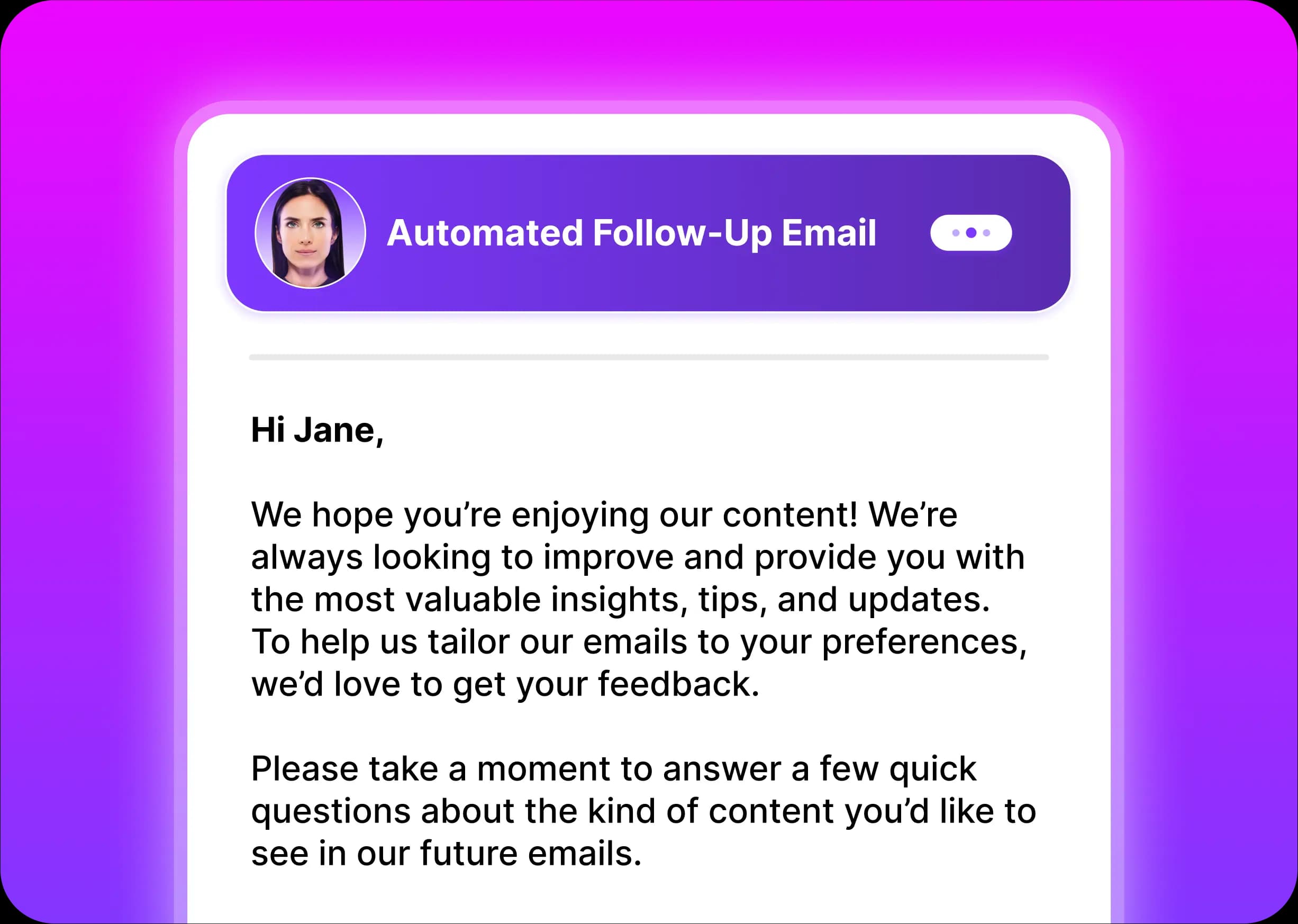
9. Start a Referral Program
Referral leads tend to have a high level of pre-existing trust in your software. Nothing builds confidence like a recommendation from a friend or colleague. As such, these leads are likely to move quickly through your sales funnel.
A referral program helps nudge satisfied customers already inclined to recommend your product over the line. Popular examples of B2B reward-based referral programs include Google Workspace, HostGator, and Gusto.
It’s also worth mentioning that referral programs don’t need to be complex. A simple link provided to your existing customers through your online dashboard is often all that’s needed.
10. Use Gated Content to Grow Your Email List
Gated content requires your new leads to provide an email address in exchange for access. You can also ask for other details like company size, mobile number, and address. This information makes it much easier to move leads through your funnel.
Here are some examples of gated content:
Webinars
White papers
Private communities
Data reports
Case studies
Quiz results (yep, we know this can be very frustrating)
Templates
Courses
Pieces of gated content, which are essentially lead magnets, are best offered at the early and middle stages of your funnel, such as in a social media post or a top-of-funnel blog post. For later-stage leads, jumping straight to a free trial or sales call will likely prove more effective.
11. Offer a Free Trial
This is a simple but straightforward one. Free trials work, with an average sales conversion rate of nearly 20% for opt-in trials (where customers don’t need to provide credit card information). And they’re pretty much expected in the SaaS space.
Follow these tips to make your free trial irresistible:
Clearly define the duration and features
Make the sign-up process frictionless
Provide an interactive onboarding tutorial
Ensure customer support responds quickly
For a great example, look no further than HubSpot, which offers a 14-day trial with full access to features, no credit card required.

12. Show Testimonials to Build Trust
A visitor to your site or landing pages, a reader of a social media post, or a recipient of an email only becomes a viable lead when they pass over their contact details. And that requires persuasion, with testimonials as one of the most effective tools.
It’s vital to showcase testimonials wherever you can—on your website, across your social media accounts, in your emails, in your paid ads, on the side of your car…OK, I’m getting carried away, but you get the idea.
Here are some ways to get your hands on the golden nuggets that are testimonials:
Send automated emails to existing customers asking for reviews
Reuse positive reviews from sites like G2, Capterra, and Trustpilot
Offer incentives in exchange for reviews like a free month
Reach out to customers directly and ask for reviews
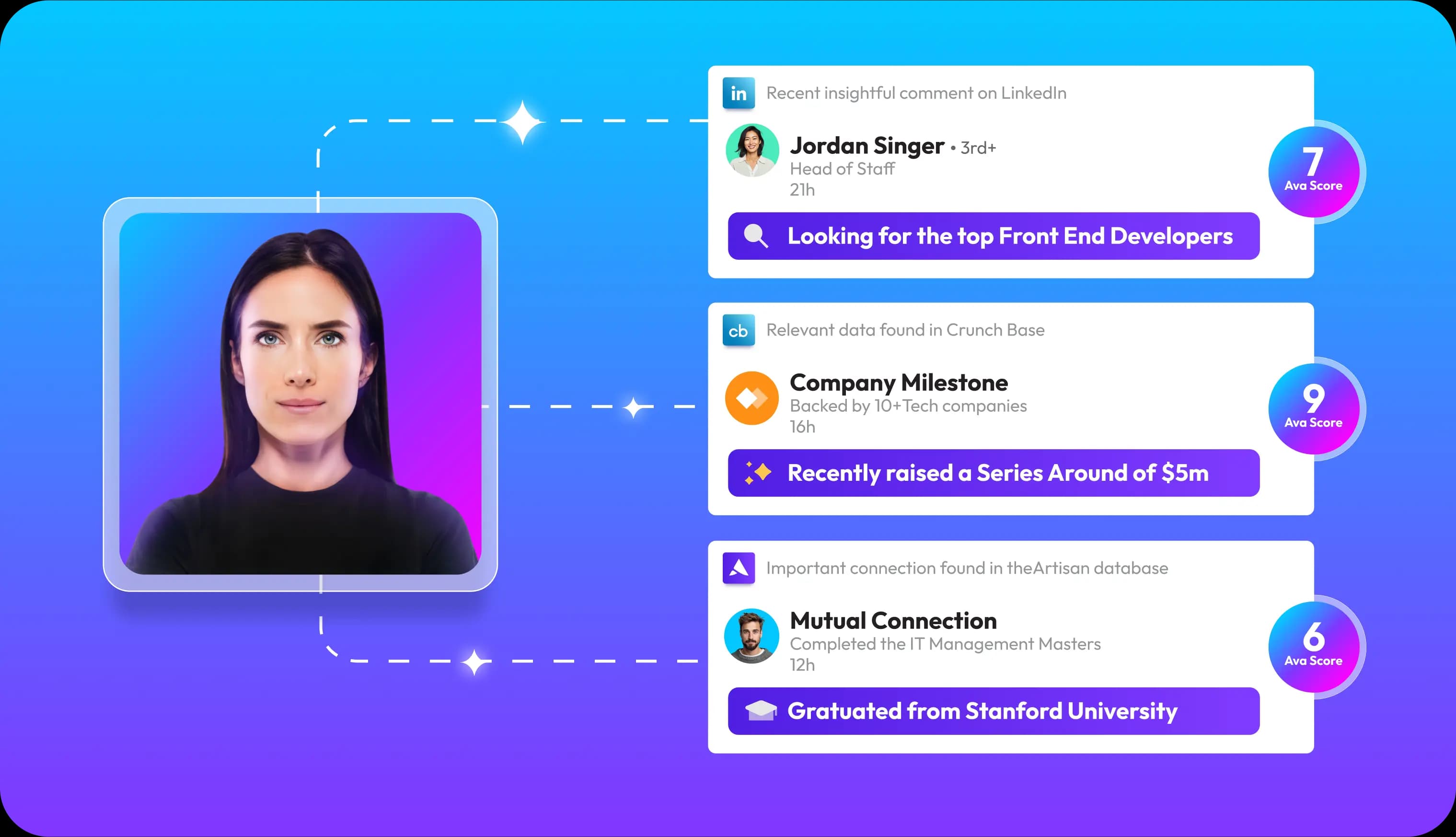
13. Stay Connected with Past Clients
Past clients from different projects and previous customers of your existing SaaS solution are often overlooked as leads. Yet simply re-engaging with your network and past customers can provide numerous low-cost sales opportunities.
Here’s a five-step guide to connecting with past clients:
Filter past clients in your CRM according to your ICP.
Identify their most pressing needs based on historical data.
Create and send personalized messages, perhaps with a physical gift.
Offer an incentive like a discount or extended free trial.
Follow up with a phone call where possible.
14. Try AI Lead Generation Tools to Acquire Qualified Leads
Used in the right way, AI can give you a strong competitive advantage in finding, qualifying, and engaging leads. It can streamline many processes previously out of bounds for simple if-then automations. 64% of marketers are already using AI, and 38% of those who aren’t plan to start in the immediate future.
AI lead-gen tools don’t need to form all of your B2B SaaS strategy, but they can play a prominent role.
Here are the main ways that AI can boost your lead-gen:
Intelligently personalizing outreach to increase engagement
Identifying best-fit leads by cross-referencing your ICP with large lead databases
Analyzing large data sets and providing actionable insights
Scoring and qualifying early-stage leads based on historical data

Artisan is an innovative AI lead-gen platform that handles all aspects of your cold outreach campaigns. Artisan’s AI assistant, Ava, has access to a database of 300 million leads to run against your ICPs and will optimize your messaging based on deep analytics. Book a demo to discover how Artisan can help you exceed your targets.
15. Consider Outsourcing Your Lead Generation
Outsourcing doesn’t require an all-or-nothing approach. Many B2B SaaS companies outsource tasks for which they lack in-house expertise to free up resources for what they do well. Outsourcing is particularly suitable for types of lead generation that have a large technical component.
Common areas for outsourcing include the following:
Platform-specific paid advertising (LinkedIn, Google Ads, Facebook, etc.)
Search engine optimization (SEO)
Cold calling at scale
Thought leadership content production
Physical ad distribution (such as flyers)
Some agencies may also sell qualified leads directly and this can be worth exploring, especially if the agency has specialized understanding of a market or niche.
5 Tools for B2B SaaS Lead Generation
If your strategies make up the map, tools are the parts of the engine that powers you towards your marketing goals. A well-functioning tech stack is essential for ensuring your lead generation efforts meet with success.
Let's take a look at some of the top tools for your SaaS business.
Artisan for Sales Automation

Artisan is an outbound sales and lead generation platform that runs on a next-gen AI engine. Its virtual sales development representative (SDR), Ava, builds your campaigns and compiles a targeted list of leads from Artisan’s 300 million-strong database, with up-to-date contact information including phone numbers. You can use Artisan to automate ever aspect of your outbound lead generation process.
Key Features
Database of 300 million B2B leads (with data covering demographics, technographics, and psychographics)
Hands-off lead generation campaign creation, management, and optimization
A proprietary waterfall that personalizes every step of the lead nurturing process by drawing on multiple data sources and playbooks that replicate human interactions
AI playbooks that replicate winning cold email outbound strategies
Email warmup and deliverability optimization
Price
Artisan has a custom pricing model so that all customers get the best possible value and a plan uniquely designed to meet their needs. Contact a sales representative to organize a free trial.
Ahrefs for SEO and Content Marketing

Ahrefs is the web’s leading tool for ent-to-end SEO optimization, from finding high-volume keywords around which to create content to flagging SEO issues on your site.
Key Features
Keyword research engine
Ongoing SEO audits and quality assurance
Competitor research
Rank tracking
Local SEO tools
Website tracking that runs alongside Google Analytics
Price
Plans start at $129/month for the Lite package and run all the way up to $14,990/year for the Enterprise option.
HubSpot for Email Marketing

HubSpot is well-known for its extensive email marketing functionality and ease of use, which has made it a hit with businesses of all sizes. Its pricing model, which is based on the number of subscribers, also makes it a fair and viable option irrespective of size.
Key Features
Email broadcasts and automated sequences
Customizable templates
Subscriber segmentation
Email activity analytics
Price
HubSpot’s email marketing software is part of Marketing Hub, and you can get started with it for free. If you’re looking for more advanced features to help automate and scale your marketing operations, HubSpot also offers premium features with the Starter, Professional, and Enterprise editions of Marketing Hub.
Zoho CRM for Customer Relationship Management

There are lots of CRMs to choose from but Zoho hits all the right buttons for ease of use, functionality, and workflow automation. It also has a large library of integrations, meaning it’ll slot into your tech stack as smooth as a Julio Iglesias song.
Key Features
Contact storage, management, and scoring
Sales forecasting
Sales pipeline tracking and visualization
Integrations library
Price
Pricing for Zoho CRM starts at $14/month per user and goes up to $40/month per user
Hootsuite for Social Media Management

Hootsuite has an integrated dashboard for managing your social media channels from a single place. You can also automate many time-consuming tasks.
Key Features
Multiple social media account management
Supports Facebook, Instagram, Twitter, LinkedIn, TikTok, YouTube, Pinterest, WhatsApp, and Threads
Post scheduling
Price
Hootsuite plans start at $99/month with no maximum user cap. A limited free plan is available.
The Best Marketing Advice Ever Given…
One of the best pieces of marketing advice ever given in relation to lead gen is to find your horse and ride it until it dies (the source is lost in the mists of time). Now, we’re not advocating violence against animals, but we do believe in the sentiment.
Successful lead-gen for B2B SaaS is about finding the strategies that give you traction and going hard.
You don’t need to be everything all at once. In fact, it would be absolutely counterproductive to try. Trying to implement every strategy on this list is a fast track to a headache and a marketing budget in the negative figures.
Instead, experiment with a handful of strategies likely to be a fit and zoom in on the winners. You’ll likely find that your converting leads to customers like never before.
In the meantime, if you’re interested in how AI can deliver qualified, ready-to-buy leads, consider giving Artisan a test drive. Our virtual AI sales development representative, Ava, has access to a database of over 300 million up-to-date leads, many of whom are B2B SaaS buyers.
Interested? Book a demo now.
Author:
Tina Sang
You might also like
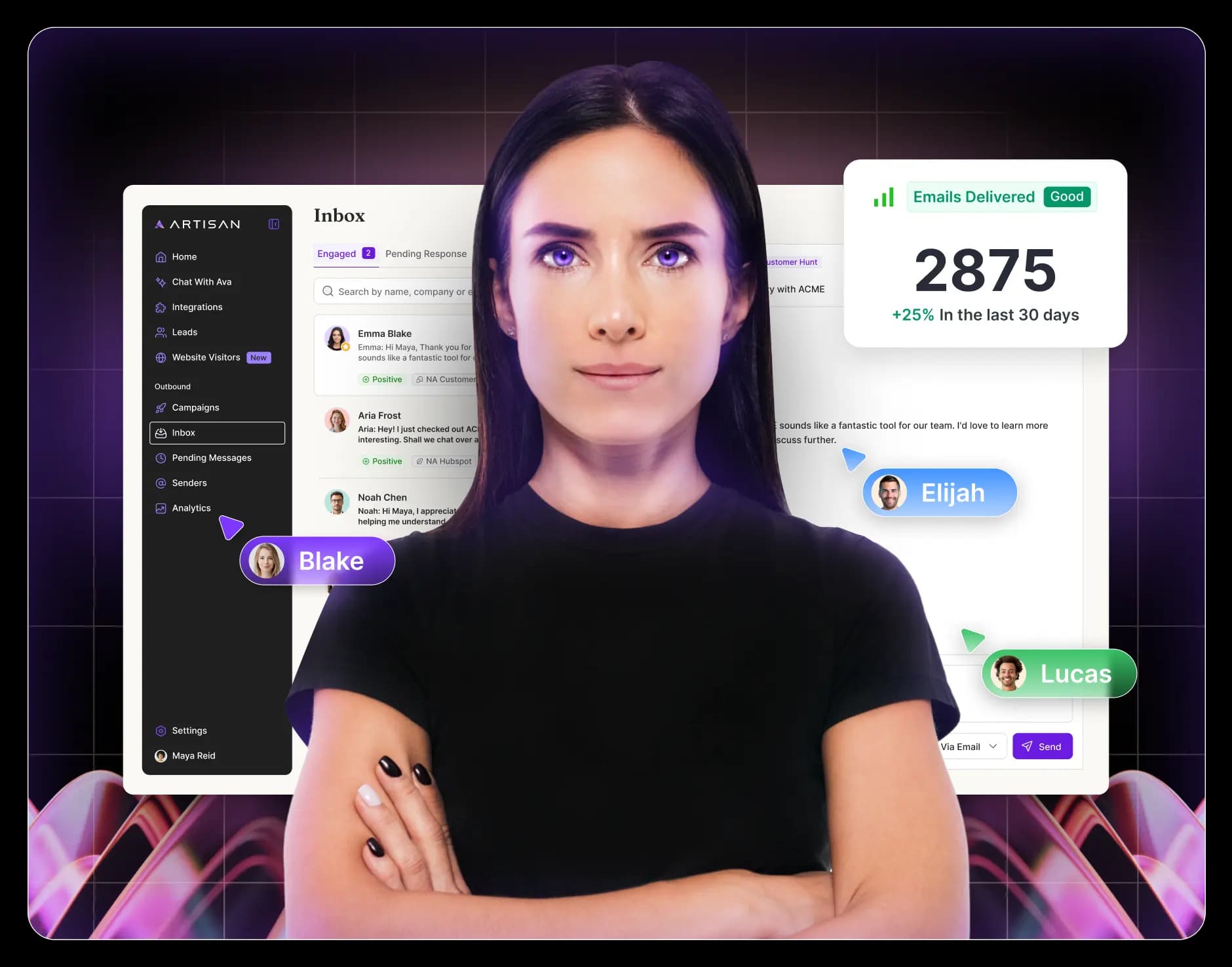
Ready to Hire Ava and Supercharge Your Team?
Ava is equipped with the best-in-class outbound tools to automate your outbound, freeing your reps’ time to focus on closing deals.